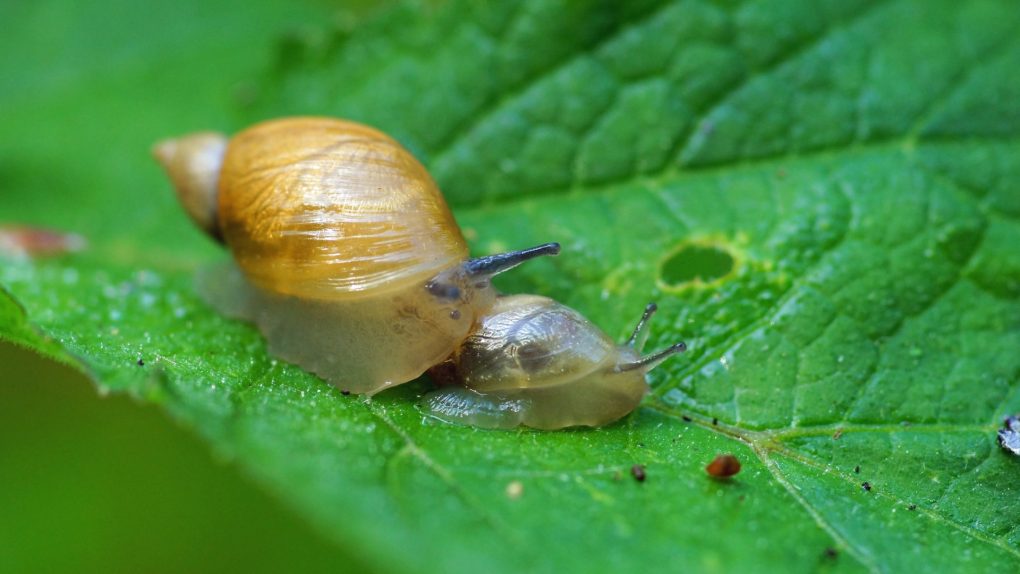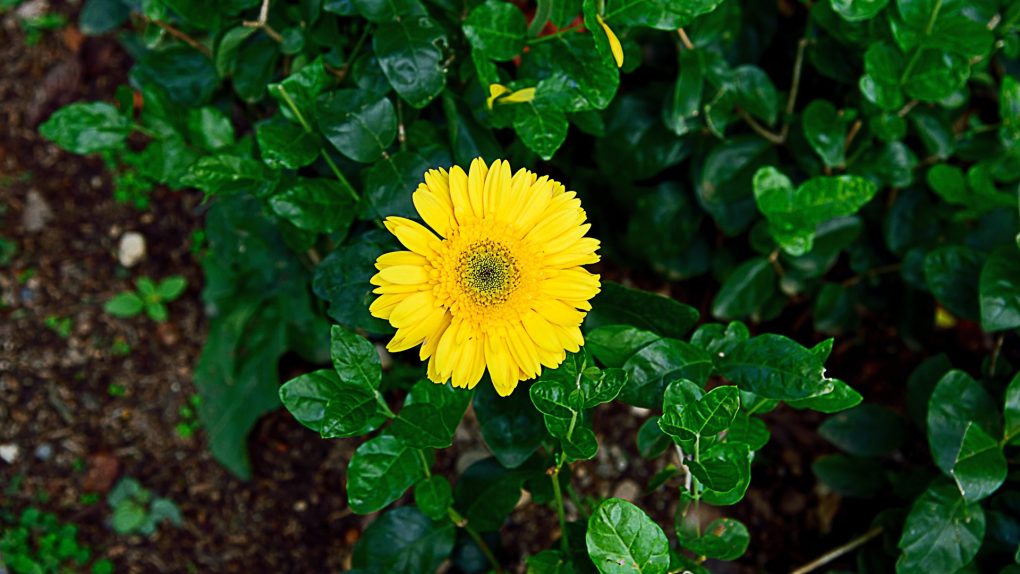Do Slugs Eat Gerbera? Everything You Need to Know
Slugs can eat gerbera plants. These garden pests are attracted to the tender leaves and petals of the gerbera, causing significant damage to the plant’s health and appearance.

To protect your gerbera plants from slugs, consider using methods such as setting up beer traps, sprinkling diatomaceous earth, or attracting natural predators like birds and beetles. Additionally, practice good garden hygiene by clearing debris to eliminate slug-hiding spots.
Table of Contents
Understanding Slugs and Gerbera
Gerbera flowers, known for their vibrant colors and delicate blooms, are vulnerable to slug damage. Slugs are shell-less creatures that feed on leaves and flowers, causing significant harm to plants. Their attraction to Gerbera’s succulent leaves and colorful petals makes it essential to take preventive measures. By employing slug control methods such as barriers and organic solutions, gardeners can maintain healthy and vibrant Gerbera plants, despite the presence of slugs.
Gerbera Flowers: A Slug’s Favorite Treat
Gardeners highly value gerbera flowers, but unfortunately, they are also a preferred food of slugs. Slugs have an appetite for Gerbera flowers’ tender leaves and bright petals, resulting in unsightly damage. This can be frustrating for gardeners who want to enjoy the beauty of their Gerberas without constant pest concerns. However, with the right approach, it is possible to prevent slug infestations and keep Gerbera flowers in pristine condition.
Attractiveness of Gerbera Daisies to Slugs
Gerbera daisies are popular among gardeners due to their bright colors and long-lasting blooms. However, slugs are attracted to Gerbera daisies because of their succulent leaves and flowers. Slugs often hide under the leaves and petals during the day, making them difficult to detect. Slug damage results in unsightly holes and a ragged appearance in the leaves. To protect Gerbera flowers, it is advisable to use slug repellents, create barriers, and maintain a clean garden by removing dead leaves and debris.
How Slugs Attack Gerbera Flowers
Slugs target Gerbera flowers due to the succulence of their leaves and petals. These voracious eaters attack Gerberas at night, leaving behind slime trails and causing holes in the foliage and blooms. The damage inflicted by slugs negatively affects the overall health and appearance of the plants. Gardeners can employ effective methods such as slug repellents, copper tape, or barriers to prevent slug damage. Additionally, natural predators like birds and beetles can help control slug populations in the garden.

Identifying Slug Damage on Gerbera Flowers
Slug damage on Gerbera flowers exhibits several noticeable symptoms. The slimy trails left behind on the leaves and petals clearly indicate slug presence. Slugs also create small holes with ragged edges in the foliage and blooms. Wilted appearance and discoloration in the flowers are further signs of slug infestation. Preventing slug damage involves various methods such as using slug baits, manually removing slugs, and implementing barriers in the garden.
The Battle Against Slugs
Maintaining a healthy garden requires an ongoing battle against slugs, which can cause significant damage to Gerbera flowers. While there are various methods to control slug populations, prevention is key. Keeping the garden clean and debris-free discourages slugs from making themselves at home. Equipped with the right tools and knowledge, you can successfully combat slugs and protect your cherished Gerbera flowers.
Non-chemical Methods for Slug Control on Gerbera Flowers
Slugs are attracted to Gerbera flowers, so employing non-chemical methods for slug control is crucial. Here are some effective approaches:
1. Handpicking: Manually removing slugs from your garden is a simple and effective. Regularly inspect your Gerbera plants, especially during the evening or early morning when slugs are most active. Please dispose of the captured slugs away from your garden to prevent their return.
2. Barriers: Create physical barriers to deter slugs from reaching your Gerbera flowers. Copper strips or eggshells placed around the base of the plants act as deterrents since copper repels slugs. Ensure the barriers form a complete circle around the plant to prevent slugs from crawling over them.
3. Slug traps: Set up slug traps filled with beer or a mixture of yeast and sugar. Slugs are attracted to the smell and will crawl into the traps, where they drown. Empty and refill the traps regularly for continued effectiveness.
4. Encourage natural predators: Invite natural slug predators like birds, frogs, or hedgehogs to your garden. Creating a welcoming environment for these animals can help keep slug populations under control. Provide water sources, shelter, and suitable habitats to attract these beneficial creatures.
By implementing these non-chemical methods, you can effectively control slugs on your Gerbera flowers and maintain a healthy garden ecosystem without relying on chemical pesticides.

Chemical Methods for Slug Control on Gerbera Flowers
While non-chemical methods are preferable, there are situations where chemical control may be necessary. Here are some chemical methods for slug control on Gerbera flowers:
1. Slug pellets: Metaldehyde-based slug pellets are commonly used but should be applied sparingly and according to instructions. These pellets pose a risk to other wildlife and should be used cautiously.
2. Ferric phosphate: An alternative to metaldehyde-based pellets is ferric phosphate. This chemical is safer for other wildlife and can be used as a slug control measure. However, it may require more frequent applications for optimal effectiveness.
Remember to use chemical methods judiciously and as a last resort. Prioritize using non-chemical alternatives to minimize potential harm to the environment and beneficial organisms in your garden.
Preventing Slug Infestation on Gerbera Flowers
Prevention is the key to avoiding slug infestation on your Gerbera flowers. Here are some preventive measures you can take:
1. Physical barriers: Install copper tape or mesh around your Gerbera plants to create a barrier slugs cannot cross. This prevents them from reaching your plants and causing damage.
2. Slug repellents: Apply natural slug-repellent substances like diatomaceous earth or coffee grounds around your plants. These repellents create an unpleasant environment for slugs and discourage their presence.
3. Encourage natural predators: Create a garden environment that attracts natural slug predators such as birds and hedgehogs. This can be achieved by providing suitable habitats, food sources, and water.
4. Avoid overwatering: Slugs are attracted to moist environments, so avoid overwatering your Gerbera flowers. Instead, maintain proper drainage to prevent excessive moisture, which can attract slugs.
5. Companion planting: Plant slug-resistant companion plants like marigolds, thyme, or lavender near your Gerbera flowers. These plants emit scents that slugs find unappealing, acting as a natural deterrent.

By implementing these preventive measures, you can reduce the likelihood of slug infestation on your Gerbera flowers and maintain a healthy garden.
Choosing Slug-Resistant Gerbera Varieties
Selecting slug-resistant Gerbera varieties is another effective strategy to protect your flowers. Consider the following factors when choosing Gerbera varieties:
1. Leaf texture: Opt for Gerbera varieties with tough or hairy leaves, as slugs are less likely to feed on them. These leaf characteristics are a natural deterrent, making the plants less attractive to slugs.
2. Flower color: Certain flower colors may be more or less attractive to slugs. While there is no universal rule, it’s worth experimenting with different colors to see if there are any variations in slug activity. However, observing which colors slugs are less attracted to can guide your selection of Gerbera varieties.
3. Resistance traits: Look for Gerbera varieties bred or selected for slug resistance. These varieties are specifically developed to withstand slug feeding and are more likely to thrive even in the presence of slugs.
Consult with local nurseries or gardening experts to identify slug-resistant Gerbera varieties suitable for your region. Choosing the right varieties can significantly reduce the risk of slug damage to your Gerbera flowers.
Ideal Growing Conditions for Gerbera Flowers
Creating optimal growing conditions for your Gerbera flowers promotes their overall health and makes them less vulnerable to slug infestation. Consider the following guidelines:
1. Well-draining soil: Gerberas prefer well-draining soil with a pH range between 6.0 and 6.5. Incorporate sand or perlite into the soil to improve drainage and prevent waterlogging, which can attract slugs.
2. Regular watering: Maintain a consistent watering schedule for your Gerbera plants. Water deeply and allow the soil to dry slightly between watering sessions. Avoid overwatering, as excess moisture can create favorable conditions for slugs.
3. Fertilization: Provide regular fertilization every two weeks during the growing season. This ensures that your Gerbera plants receive the nutrients for healthy growth, making them more resilient to slug damage.
4. Garden cleanliness: Keep your garden free of debris and weeds, as these can provide hiding spots for slugs. Regularly remove fallen leaves, plant debris, and any decaying organic matter that may attract slugs to your garden.
By implementing these ideal growing conditions, you create an environment that supports the health and vitality of your Gerbera flowers while minimizing the risk of slug infestation.

Companion Planting to Deter Slugs
Companion planting involves strategically placing plants that naturally repel slugs near your Gerbera flowers. Consider the following slug-deterring companion plants:
1. Marigolds: Plant marigolds near your Gerberas to repel slugs with their strong scent. These colorful flowers add beauty to your garden and act as a natural deterrent against slugs.
2. Thyme and lavender: Both thyme and lavender emit fragrances that slugs find unpleasant. Incorporating these aromatic herbs into your garden can deter slugs while enjoying their culinary or aromatic benefits.
3. Avoid slug-attracting plants: Avoid planting slug-favorite plants like hostas or lettuce near your Gerberas. These plants can attract slugs and increase the risk of infestation.
Regularly inspect your garden for signs of slug infestation and promptly remove any affected plants or slugs. You can effectively deter these pests from your Gerbera flowers by practicing companion planting and creating a garden environment that discourages slugs.
Conclusion
In the battle against slugs, protecting your Gerbera flowers requires a proactive approach. You can successfully combat slug infestations by understanding why slugs find Gerberas attractive, recognizing slug damage symptoms, and implementing preventive measures.
